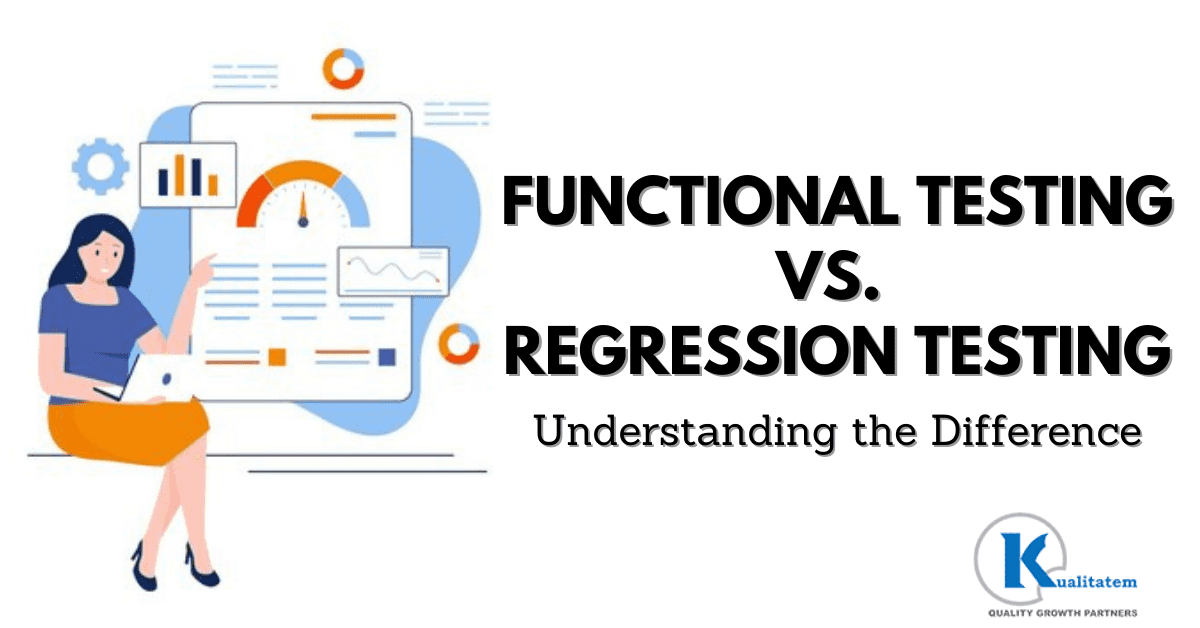Functional vs. Regression Testing: Understanding the Difference

- March 27, 2023
- admin
As a SQA expert, I often get asked about the different types of testing methodologies that are widely used. Functional and regression are two commonly utilized methods. Despite the fact that they may sound similar, they are very diverse and have various functions.
In this blog, I will explain the differences between the two, their importance in ensuring software quality, and how they work together for overall improvement.
What is Functional Testing?
It assesses a software application’s functionality in light of the given requirements. The goal of this is to validate that the program works as expected and meets the user’s wants and specifications. Test cases are designed to cover all possible scenarios that a user may encounter.
During testing, it is tested in a controlled environment, and the results are compared against the expected results. If there are any discrepancies between the actual and expected results, defects are identified, and a bug tracking system is used to track and resolve the issues. This is done manually or automatically using automation techniques.
What is Regression Testing?
It assures that any modifications have no unwanted side effects. The goal is for the previous working version to still work after changes to the code. It ensures that new updates don’t result in the introduction of fresh bugs or the breakdown of working features.
It is used to test the software’s components that have undergone changes or updates and ensure that they continue to function as planned. It is carried out manually or automatically using test automation techniques. The goal of is to catch any defects or issues that were not caught during the functional method.
Importance in SQA
Both are essential components of quality assurance. The Regression method guarantees that modifications made to the software do not have any unforeseen consequences, whereas the functional way verifies that the product satisfies the needs and requirements of the user.
By performing these test, SQA experts can identify defects and other issues early in the development process, reducing the risk of having to fix bugs at a later stage. This also helps to ensure that the application meets the user’s needs and requirements, improving the overall user experience.
Regression testing ensures that updates don’t cause existing bugs to reappear or break new features. This is important because even small changes to the code can have unintended consequences that causes serious issues down the line. It helps to catch these bugs early, before they become major problems.
Working Together
Both of them work simultaneously to improve the overall processes. Functional testing is performed early in the development process, while regression is performed after changes have been made.
The Regression method guarantees that updates do not create new bugs or disrupt existing functionality, whereas functional finds errors and problems early in the development process. By performing both together, SQA experts ensure that the application meets the user’s needs, requirements and performs as expected.
Test automation and continuous integration can be used to streamline the testing process and ensure that both functional and regression methods are performed consistently and efficiently. While continuous integration can be used to make sure that application updates do not disrupt existing functionality, test automation tools can be used to execute repetitive and time-consuming tests.
So What’s the Difference?
To summarize, both are essential components of quality assurance. Regression method guarantees that modifications made do not have unforeseen consequences, whereas functional verifies that the product satisfies the needs and requirements of the user. By performing both methods, SQA experts can ensure that the software meets high-quality standards and provides a seamless user experience.
To achieve effectiveness, it is important to use a combination of both methods. The Manual way allows for a more personalized and thorough approach, while automated helps with speeding up the overall process. It also helps in catching any errors that may be missed during the manual phase.
In addition, it is important to use a bug tracking system to track defects that are found. This allows for a centralized location to track and resolve issues, ensuring that nothing falls through the cracks.
Conclusion
In conclusion, both functional and regression methods are crucial to ensuring SQA. By performing both methods, SQA experts can identify defects and issues early in the development process. This application meets the user’s needs and requirements, and ensure that it performs as expected. By utilizing a combination of manual and automated strategies, bug tracking systems, and continuous integration, development teams can create high-quality products that meets the needs of users and is free from defects.
Additionally, this also contributes to enhancing user satisfaction by delivering applications that is reliable, efficient, and aligned with end-user expectations.
To achieve optimal results, teams often employ a blend of manual and automated techniques, leveraging automated tools and frameworks to streamline processes and maximize test coverage. Moreover, integrating robust bug tracking systems and implementing continuous integration practices further bolsters the overall strategy, enabling teams to address problems promptly and maintain software integrity.











